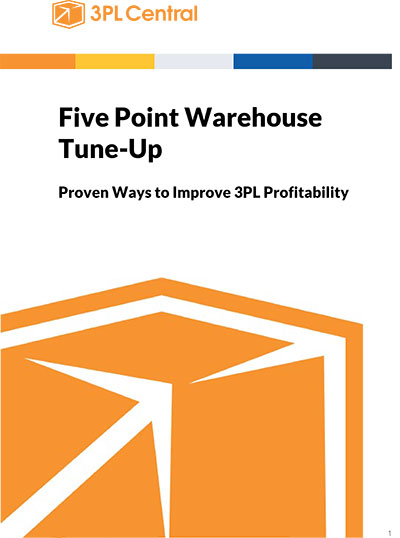5 Ways to Assess Your Warehouse Technology Needs

When looking to leverage new technology, each warehouse must assess their business and determine the solutions that offer not only best practices that are tried and true for today’s customers, but also understand what new customers may require in the future.
Technology has become one of the most critical components of the third party logistics and warehousing industry.
It goes without saying, therefore, that the hardware and software solutions used in today’s 3PLs must be kept as current as possible.
Unfortunately, continually evaluating and looking to buy the latest and greatest technology can be expensive, time-consuming and sometimes counter-productive.
So, how can warehouse operators know when they should upgrade – and when they can safely hold off - on upgrading or purchasing new warehouse technology?
When looking to leverage new technology, each warehouse must assess their business and determine the solutions that offer not only best practices that are tried and true for today’s customers, but also understand what new customers may require in the future.
The answer generally revolves around your warehouse’s current productivity, its growth aspirations, and its customers’ needs.
Given its potential impact on your finances and operations, such investments should be carefully examined before any decision is made.
We recommend that you perform the following five assessments to help you with this process:
1. Analyze Your Current Levels of Cost-Efficiency
Above all, new technology should decrease your costs overtime and improve your opportunity to earn higher profits. One of the best ways to determine cost efficiency is to analyze your profitability by customer account.
If your analysis concludes that a certain technology could help reduce current costs to serve your customers, then it may be worthwhile to invest. Once the cost of the software has amortized, your ROI would increase exponentially. It would be like giving yourself a raise – without increasing the amounts you charge your customers.
2. Determine Your Customers’ Business Requirements
Having an open rapport with your customers will provide the opportunity to better understand their goals and challenges. Are they happy with your existing technology? Is it sufficient to serve their needs both now and in the future?
As you are no doubt aware, the 3PL and warehousing industry is undergoing a seismic shift from B2B to B2C and E-commerce fulfillment. All evidence indicates that this trend will only continue to accelerate. If your current technology is not geared towards this type of fulfillment, and you’re looking to serve this growing community, you may want to consider investing in technology that is.
3. Examine The Total Cost of Your Existing Solutions
The cost of investing in any new technology may initially appear to be prohibitive. But before you put the brakes on investing, you should examine the on-going maintenance and lost opportunity costs of your existing solutions.
Is your software slow, buggy and the source of constant customer complaints? Does your equipment break down often, resulting in delays, repair expenses – and still more customer complaints? While it can be costly to invest in new products, it can prove even costlier to hang onto obsolete solutions.
4. Check Out Your Competition
The members of 3PL warehouse industry share an enormous amount in common. Although warehouses obviously differ, many provide a fairly similar array of services.
Ask your peers what they have purchased and whether they have been happy with the results. You can also explore online software directories or forums and read customer reviews. These tactics should provide some great insights into what solutions might work for you.
5. Assess Your 3PL’s Long-Term Business Goals
Are you happy with the current customers and areas of expertise you serve? Or are you looking to expand within your market – or even pursue new opportunities outside of your current areas of expertise? If so, then you may need new technology.
Even if you are happy with your status quo, you must always remember that the one constant in the 3PL warehousing industry has been change. Change that often arrives with little warning – whether we are ready for it or not.
We have found that the most profitable 3PLs we serve are extremely proactive – not reactive. Their long-term success is often a direct result of their ability to spot and capitalize on industry shifts before their competition can react. This enables them to jump on opportunities that their competitors often miss.
Article Topics
3PL Central News & Resources
Extensiv secures $80 million loan from Runway Growth Capital How to Attract More Business for Your 3PL How to Attract More Business for Your 3PL 2022 Peak Season Playbook 2022 Peak Season Playbook The E-commerce Technology Lifecycle The Ecommerce Technology Lifecycle More 3PL CentralLatest in Warehouse|DC
Walmart Unleashes Autonomous Lift Trucks at Four High-Tech DCs Plastic Pollution is a Problem Many Companies are Still Ignoring The Harsh Reality for Amazon and Walmart Warehouse Workers Supply Chain Stability Index: “Tremendous Improvement” in 2023 AI Not a Priority for Retailers and CPG Companies US Government Commits $6.6B to Boost Semiconductor Production Major Earthquake Hits Taiwan. How Will This Affect the Supply Chain? More Warehouse|DC













